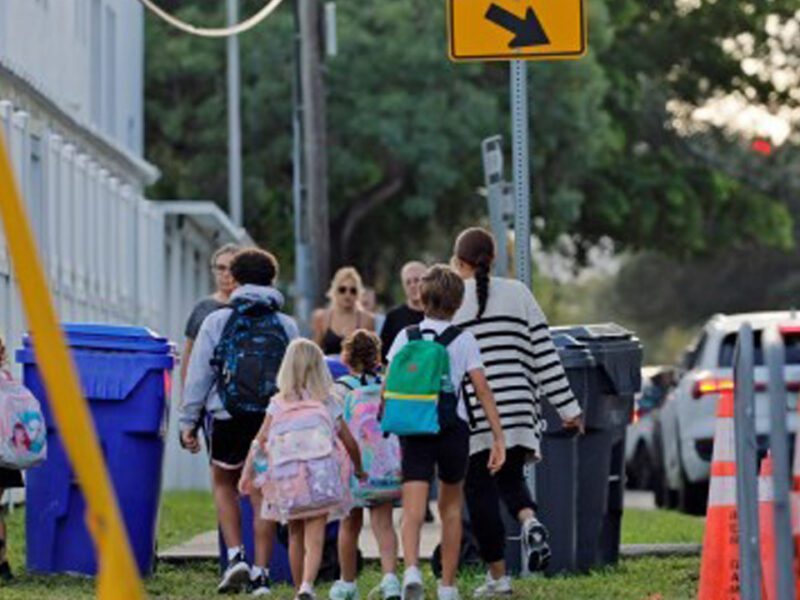
Dreyfoos’ history could bring schools $8M, but could it create workforce housing, too?
Palm Beach Post | By Sonja Isger | February 28, 2022
A decision decades ago to preserve a handful of buildings on what is now the Alexander W. Dreyfoos School of the Arts campus is poised to deliver an $8 million prize to the Palm Beach County School District.
The transaction with the city of West Palm Beach set in motion by the school board Wednesday will also deliver more elbow room with a sliver of the city golf course land going to Forest Hill High School just miles away.
But board members don’t want to stop there.
Several say they want to use their leverage in this deal to also secure desperately needed affordable housing in the downtown the school overlooks from its spot on the hill.
“Our employees need places to live. They need to be able to afford to live in the city,” said board member and West Palm Beach resident Debra Robinson, who noted that even she, a retired physician married to another physician, couldn’t afford downtown housing in today’s market.
Workforce housing is indeed in the mix, though how much is uncertain, said the city’s development services director, Rick Greene.
What is certain is that the district, through its ownership of Dreyfoos, holds the potential to change the landscape of downtown, and that the city is prepared to pay $8 million to optimize its ability to manage that development.
“It’s a win-win for them, for us,” said Greene in an interview before the board meeting.
The deal is not a common one for school districts but not unusual in municipal governments.
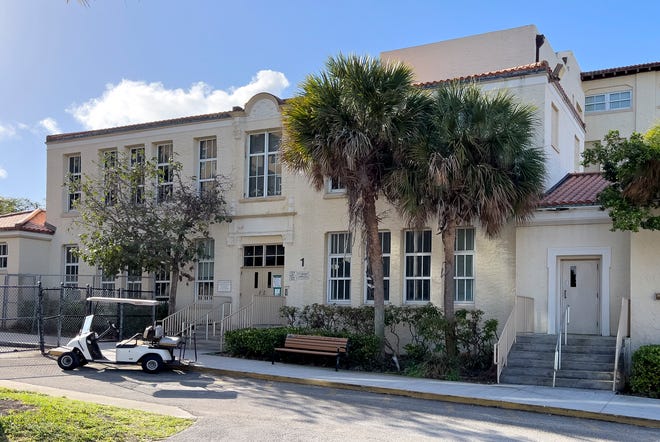
The deal hinges on historic designation for Dreyfoos School of the Arts
It all begins with the board’s agreement to seek historic designation for four buildings on the Dreyfoos campus, the oldest of which dates to 1908. In seeking historic designation, the board forfeits its rights as owner to level the buildings and to then sell or develop the nearly 20 acres to the maximum permitted by zoning code.
The buildings in question are home to classrooms and administrative offices. They take up about 120,500 square feet on a property where zoning would allow nearly 598,000 square feet of construction, according to estimates from city staff.
The difference between what has been built and what could be built by rights equals roughly 477,500 square feet.
The development rights to those “spare” square feet are portable to other properties within the downtown and are valuable in an area that is filling fast, Greene said. They are often referred to as “Transfer Development Rights,” or TDRs.
Transferable development rights became important when city officials mapped out a future for the downtown in the mid-1990s, long before condominium and office high-rises dotted the skyline.
To maximize the downtown’s potential, planners crafted a formula for building in tandem with housing that capped non-residential development at just over 15 million square feet, Greene said.
But sometimes it’s not enough to own the land on which to build. Depending on the project, the square footage permitted by right of ownership may not be enough to fulfill a developer’s wishes or to plans to make the project financially feasible.
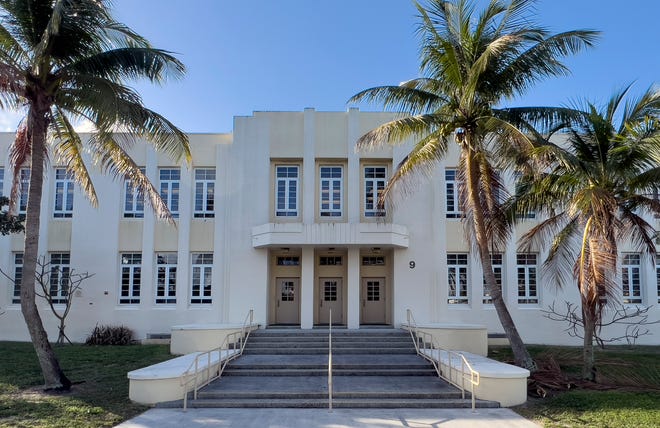
Developers can buy rights to build bigger and sometimes taller
That’s when developers seek to buy transferable rights, like those tied to Dreyfoos. With those in hand, they can build bigger — sometimes taller — than originally permitted.
Greene says there are several developers in the hunt for development rights, and the city would likely make offers to those near fruition. Such rights have become scarce. Only 5 million square feet remain in the downtown area, he said. The school district is sitting on nearly half a million of them.
The city has proposed buying the district’s rights at $17 per square foot. City officials say if the rights go for more, the city will split the profit with the district.
“Part of the reason we wanted to step in and be the broker of the TDRs is we want to make sure the people closest to getting their projects out of the gate (have the opportunity to buy them). So we don’t slow them down,” Greene said.
Any projects that include housing would have to meet city requirements that 20% of those units go to workforce housing, Greene said. But not every project in line for the Dreyfoos rights is residential, he said.
According to Greene, the projects that might tap into the TDRs include: Nora, a 12-acre district north of downtown that gets its name from North Railwood Avenue; a makeover of a downtown block off Fern Street that is to include apartments and retail; and a hotel and apartment complex project west of the Brightline rail proposed by Lineaire Group.
Board seeks to make workforce housing part of the deal
The board’s desire to make workforce housing a guaranteed part of the deal is unlikely to succeed, Superintendent Mike Burke told the board Wednesday.
“It’s a noble goal,” said Burke, who added that district staff would certainly make that part of the conversation with the city. “From a practical standpoint, staff is going to be very limited in our ability to try to tie those requirement to this.”
Trying to do so could jeopardize the deal, he said.
Marcia Andrews, who said she grew up in the West Palm Beach neighborhood where Dreyfoos sits, said she’s seen a similar sale of development rights pay off for her historic church in West Palm Beach.
She urged the board to lobby to make affordable housing a legacy of the school with a history that predates the sky-piercing condos and office towers — a school itself once considered too weathered to save.
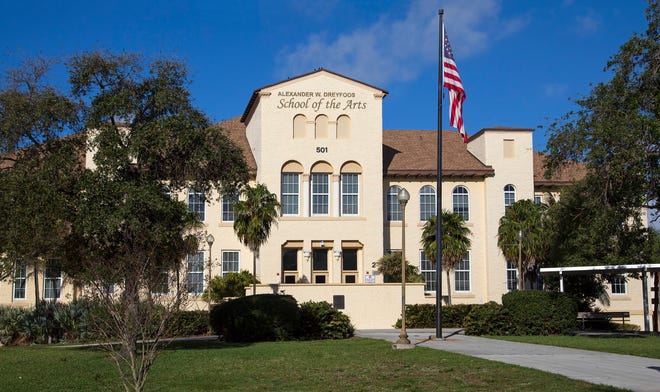
The school rose on the highest elevation on the outskirts of town as Palm Beach Central High. It withstood the strains of integration as Twin Lakes High. It served as temporary home to Palm Beach Lakes High. And then it sat vacant and decaying for eight years before reopening as Dreyfoos in 1997.
The transformation to the district’s premier performing arts school was contentious, with fierce arguments over the rising cost of preservation and debate over what could be saved. In the end, the district invested $29.5 million to save the school and four historic buildings.
At least 10% of the anticipated sale would be funneled back to maintain those buildings.
But board member Erica Whitfield says the school needs more. “Dreyfoos has been somewhat neglected over the years,” Whitfield said.
The school now draws nearly 1,400 students from across the county. It regularly ranks in the top two academically performing high schools in the district, often swapping leads with celebrated IB magnet Suncoast High.
And yet, she said, it isn’t what it should be.
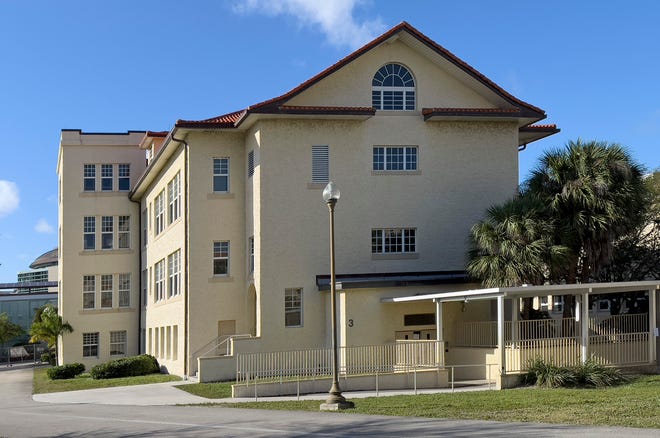
“The theater is wildly out of date. It doesn’t have any state-of-the art-tech. There’s no recording studio. There’s no practice space — and all the children there are performers. There is no computerized printing. And we are constantly losing students to private schools that are offering more state-of-the-art technology around the arts.
“This is one-time money,” Whitfield said. “I don’t think just maintaining for historic reasons those four buildings — one of which was … created before we became a county — I don’t think just preserving them for historic significance is enough. We have to put some more money into the school that is a gem for our county.”



